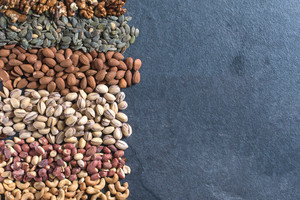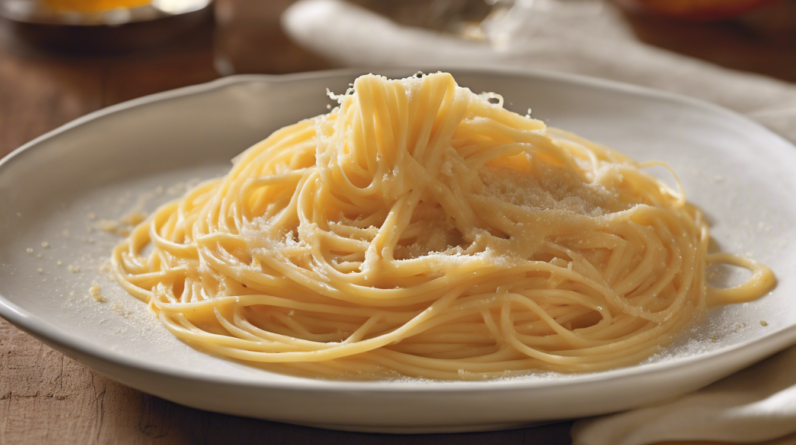In the world of Italian cuisine, there is a phrase that holds immense value – “al dente.” This simple phrase, meaning “to the tooth” in Italian, refers to the perfect texture and tenderness of cooked pasta. It is a delicate balance that chefs strive to achieve, resulting in a satisfying chew and a unique dining experience. But what exactly is the significance of “al dente” in Italian pasta cooking? Let’s uncover the secrets behind this culinary artistry and why it has become a staple in Italian gastronomy.

What is Al Dente?
Definition of Al Dente
Al dente is an Italian term that literally translates to “to the tooth.” It refers to the perfect texture of cooked pasta, where it is firm to the bite yet still tender. When pasta is cooked al dente, it offers a satisfying chewiness that enhances the overall dining experience.
Origin of Al Dente
The concept of cooking pasta al dente originates from Italy, where pasta is a staple in the country’s cuisine. Italians take great pride in their pasta, and the al dente cooking method is deeply rooted in their culinary traditions. It is believed that the technique was developed in the 14th century in the region of Lombardy, where pasta was commonly cooked until it reached a softer consistency. However, as pasta began to gain popularity throughout Italy, chefs started experimenting with different cooking times to achieve the desirable al dente texture.
Importance in Italian Cuisine
Al dente pasta is highly valued in Italian cuisine due to its cultural significance and the unique mouthfeel it offers. It is a fundamental aspect of numerous traditional Italian dishes and plays a crucial role in enhancing their flavors and textures. Al dente pasta is not only admired by Italians but is also cherished by pasta lovers worldwide for its delicious and distinctive characteristics.
Achieving the Al Dente Texture
Recommended Cooking Time
To achieve the perfect al dente texture, it is essential to follow the recommended cooking time specified on the pasta packaging. Typically, this ranges from 8 to 12 minutes, depending on the type and thickness of the pasta. Overcooking beyond the recommended time can result in a mushy texture, while undercooking can leave the pasta too firm and difficult to chew.
Testing for Al Dente
The best way to determine if the pasta is cooked al dente is by tasting it. Take a small piece of pasta and check its texture by biting into it. Al dente pasta should offer some resistance to the teeth while still being tender and cooked through. It should not be crunchy or excessively chewy.
Factors Affecting Al Dente Texture
Various factors can influence the al dente texture of pasta, including the type of pasta, the quality of ingredients, and even the altitude at which it is cooked. Different pasta shapes and sizes have different ideal cooking times. The water-to-pasta ratio, the freshness of the pasta, and the boiling temperature can also affect the final texture. It is crucial to understand these factors and make adjustments accordingly to achieve consistent al dente results.

Culinary Benefits of Al Dente Pasta
Enhanced Flavor
One of the significant benefits of al dente pasta is the enhanced flavor it offers. The firmness of the pasta allows it to hold onto sauces better and absorb flavors more effectively. When cooked al dente, the pasta retains its unique taste and complements the overall dish without becoming overshadowed or soggy.
Improved Nutritional Value
Cooking pasta al dente can also enhance its nutritional value. The firm texture slows down digestion, resulting in a lower glycemic index compared to fully cooked pasta. This means that al dente pasta causes a slower and more gradual rise in blood sugar levels, making it a favorable option for individuals with diabetes or those looking to maintain stable blood sugar levels.
Ideal for Pasta Salads
Al dente pasta is an essential element in pasta salads. The firmness of the pasta allows it to withstand dressings without becoming overly soft or mushy. This makes al dente pasta the perfect base for a variety of pasta salad recipes, as it maintains its shape and texture even when mixed with other ingredients and dressings.
The Science Behind Al Dente
Structure of Pasta
To understand the science behind al dente pasta, it is important to consider the structure of pasta itself. Pasta is composed of durum wheat semolina and water, which forms a dough that is then shaped into various pasta shapes. The gluten in the wheat gives pasta its elasticity and allows it to retain its form during cooking.
Starch Gelatinization
When pasta is cooked, the heat causes the starch molecules within the pasta to absorb water and swell. This process, known as starch gelatinization, softens the starch but maintains its structure. The longer pasta is cooked, the more the starch molecules break down, resulting in a softer and more tender texture. Cooking the pasta al dente ensures that the starch gelatinization process is limited, preserving the desired firmness and chewiness.
Impact of Cooking Time on Starch
The cooking time of pasta plays a crucial role in determining its starch content. Overcooking pasta leads to a higher degree of starch gelatinization, causing the pasta to become overly soft and lose its al dente texture. By cooking pasta al dente, the starch is partially gelatinized, preserving the pasta’s shape and texture while allowing it to retain some resistance to the bite.

Regional Variations of Al Dente
Italian Regions and Pasta Preferences
Italy is a country known for its diverse regional cuisines, and each region has its own unique pasta preferences and cooking techniques. While al dente pasta is beloved throughout Italy, there are subtle variations in cooking times and preferences across different regions.
Al Dente in Northern Italy
In Northern Italy, al dente pasta is often cooked for a shorter amount of time compared to other regions. The preference for a slightly firmer texture reflects the emphasis on simplicity and showcasing the quality of the pasta itself. This style of al dente pasta is particularly prominent in regions such as Lombardy and Emilia-Romagna.
Al Dente in Southern Italy
Southern Italy tends to lean towards a slightly softer al dente texture. Pasta is cooked for a longer time, resulting in a more tender bite. This preference is influenced by the abundant use of rich tomato sauces in Southern Italian cuisine, where the softer pasta absorbs the flavors of the sauce more effectively.
Common Mistakes When Cooking Al Dente
Overcooking Pasta
Overcooking pasta is one of the most common mistakes made when trying to achieve the al dente texture. This can result in a mushy and unappealing pasta that lacks the desired firmness. It is important to follow the recommended cooking times and periodically check the pasta for doneness to avoid this mistake.
Undercooking Pasta
On the other hand, undercooking pasta can leave it too firm and difficult to chew. The pasta may still have a raw taste and lack the desired tenderness. It is crucial to find the right balance and ensure that the pasta is cooked through while still offering some resistance to the bite.
Lack of Salt in Boiling Water
Another mistake that can affect the al dente texture is not adding enough salt to the boiling water. Salt plays a crucial role in seasoning the pasta as it cooks and enhances its overall flavor. It also helps slightly firm up the pasta, contributing to the al dente texture. Adding salt to the boiling water is an essential step in achieving perfect al dente pasta.

Tips for Perfect Al Dente Pasta
Choosing the Right Pasta
To achieve the best results, it is important to choose the right type of pasta for your desired dish. Different pasta shapes and sizes have varying cooking times and textures. Thinner pasta, such as spaghetti or angel hair, requires less cooking time, while thicker pasta, like penne or rigatoni, may take longer to cook al dente. Understanding the pasta’s characteristics will help you select the most suitable option.
Salt and Boiling Water
Adding salt to the boiling water is a key step in cooking al dente pasta. The general rule of thumb is to use 1-2 tablespoons of salt per gallon of water. Salt helps to season the pasta as it cooks and contributes to its overall flavor. It also slightly firms up the pasta, aiding in achieving the desired al dente texture.
Monitoring and Tasting
Regularly monitoring the pasta while it cooks is crucial in achieving the perfect al dente texture. Follow the recommended cooking time on the pasta packaging, but also perform regular taste tests to check for doneness. Remove a small piece of pasta and bite into it to ensure it offers some resistance while still being tender. Once the pasta reaches the desired al dente texture, it should be immediately drained to prevent further cooking.
Al Dente Pasta in Popular Italian Dishes
Spaghetti alla Carbonara
Spaghetti alla Carbonara is a classic Italian dish that showcases the beauty of al dente pasta. The pasta is typically cooked until just al dente, then tossed with a rich sauce made from eggs, Pecorino Romano cheese, pancetta, and black pepper. The firmness of the pasta perfectly complements the creamy sauce, creating a harmonious balance of textures.
Pasta Primavera
Pasta Primavera is a vibrant and fresh pasta dish that highlights the flavors of seasonal vegetables. Al dente pasta is tossed with a medley of sautéed vegetables, such as bell peppers, zucchini, and cherry tomatoes. The firm texture of the pasta allows it to hold its shape and stand up to the vibrant vegetables, resulting in a delightful combination of flavors and textures.
Fettuccine Alfredo
Fettuccine Alfredo, a beloved pasta dish worldwide, relies on al dente pasta as its foundation. The pasta is cooked until just al dente and then coated in a luxurious sauce made from butter, cream, and Parmigiano-Reggiano cheese. The firmness of the pasta pairs perfectly with the velvety sauce, creating a decadent and indulgent experience.

Cultural Significance of Al Dente
Tradition and Heritage
Al dente pasta is deeply ingrained in Italian culinary tradition and heritage. It represents the centuries-old art of pasta making and reflects the craftsmanship and pride Italians have in their food. The emphasis on achieving the perfect al dente texture is a testament to the dedication and passion Italians have for their cuisine.
Family and Social Gatherings
In Italy, food is not just nourishment; it is a means of bringing people together and strengthening social bonds. Al dente pasta is often served during family gatherings, celebrations, and special occasions. The act of sharing a meal prepared with love and care, featuring perfectly cooked al dente pasta, fosters a sense of togetherness and camaraderie.
Italian Identity and Culinary Pride
Al dente pasta is intertwined with Italian identity and culinary pride. It symbolizes the rich culinary heritage of Italy and showcases the mastery of Italian chefs in creating exceptional dishes. Italians take great pride in their pasta, and the art of cooking it al dente is a source of culinary prowess and national pride.
Conclusion
Al dente pasta is more than just a cooking technique; it is a culinary philosophy deeply rooted in Italian cuisine. The al dente texture enhances the flavor and nutritional value of pasta while allowing it to maintain its unique characteristics. From the science behind al dente to its cultural significance, embracing the concept of al dente pasta allows us to appreciate the artistry and heritage of Italian cooking. So the next time you cook pasta, strive for the perfect al dente texture and savor the rich traditions it embodies.










